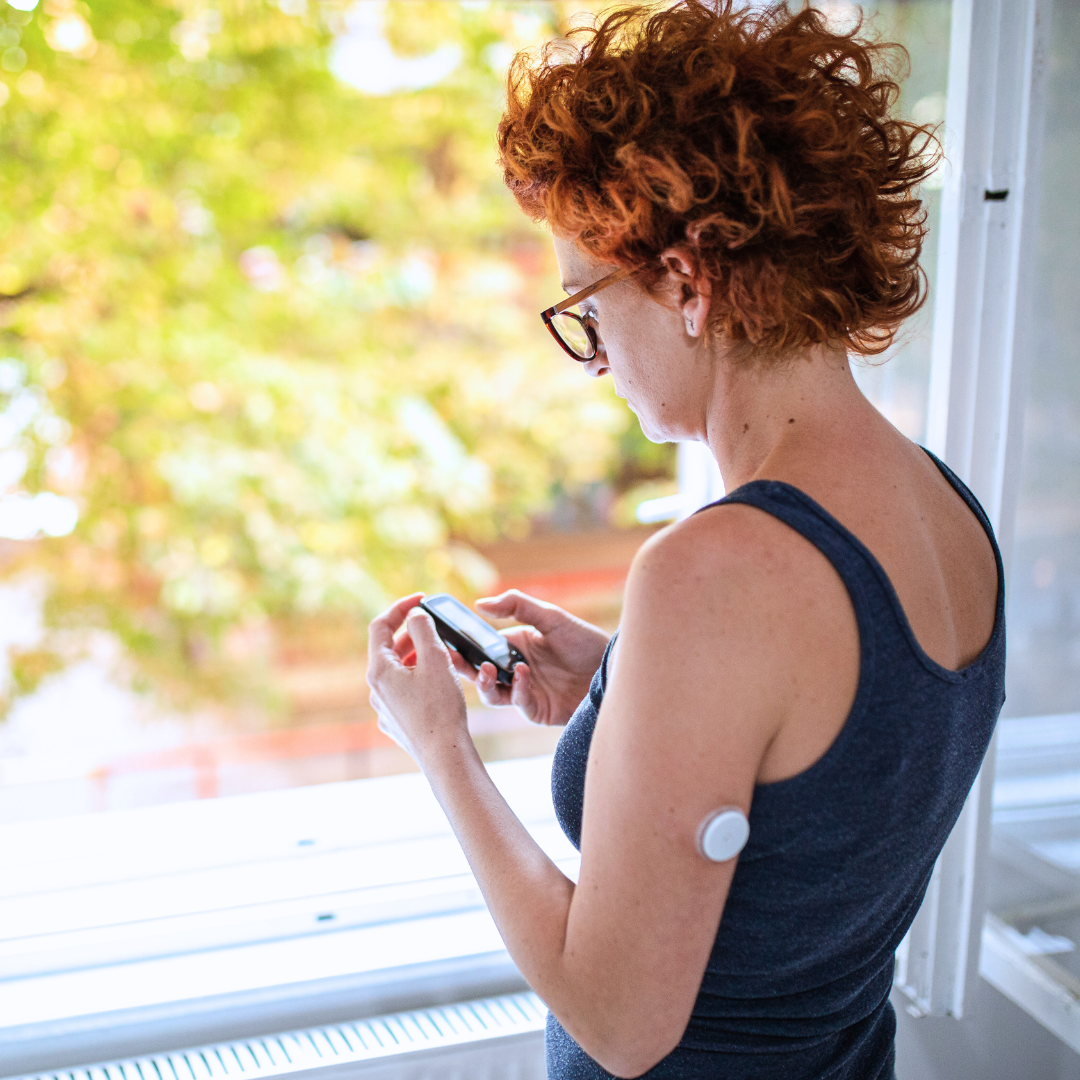Navigating New Diabetes Technology: A Guide to Reducing Stress and Staying Healthy

When it comes to living with or aiding someone with diabetes it can sometimes feel overwhelming and stressful. This is especially true when it comes to understanding all the different technologies on the market to help manage the diagnosis.
Let’s explore…
What is Diabetes Technology?
Diabetes technology includes devices, apps, and trackers that help people with diabetes keep their blood sugar levels in check. Examples include continuous glucose monitors, or CGMs, that constantly monitor your sugar levels and insulin pumps that deliver insulin without shots.
Why Is It Important?
Diabetes technology makes managing the disease much easier and less stressful. With the right tools, you can catch blood sugar highs and lows before they become a health concern.
How Can New Diabetes Technology Help?
- Continuous Glucose Monitors (CGMs) look like a patch and comes with a special tool to put a sensor under your skin. The sensor reads how much glucose, or sugar, is in the fluid around your tissues. Normally, when we check our blood sugar, we use a small devise that pricks our finger to get a drop of blood. But with a sensor, you don’t need to do that!
The sensors can last anywhere from 7 to 14 days and measure your glucose levels every 1-5 minutes, depending on the type of sensor you have. There are several types of sensors you can get. Some come with their own reader, some work with an app on your phone, and some can even send your glucose levels straight to an insulin pump. Sometimes, though, you might still need to use the finger-stick device if you’re not sure if the sensor is giving the right reading. It’s always a good idea to keep a finger-stick device around just in case. So, these sensors are like stickers you put on your body, and they send your blood sugar levels to a device you can read, like a reader or your phone. No more finger sticks needed1!
- Insulin Pumps have come a long way in the last decade. The original insulin pumps were the size of back packs. People used to be admitted to hospitals so they could be taught how to use them. But now some pump training is done online.
An insulin pump has a small container that usually holds enough insulin to last for 2 to 3 days. It only uses short acting insulins like Novolog, Humalog or Fiasp. Instead of taking long-acting insulin shots, it gives you small doses of insulin throughout the day.
A thin tube connects the pump to your body, delivering insulin. If you have a continuous glucose monitor (CGM), the pump can automatically adjust insulin based on your glucose levels. However, you still need to enter the carbohydrate grams you’re eating or estimate the size of the meal to confirm mealtime insulin delivery.
Before starting pump training, it’s important to learn about ketone strips, especially if your blood sugar is high. Insulin pumps can help improve A1c levels and quality of life. They do the math for you, and you always have insulin with you. But remember, wearing the pump 24 hours a day, 7 days a week and monitoring for ketones is very important.
- There are many apps and trackers to help you log your food, exercise, and blood sugar levels. Just by entering the amount of carbs you eat; you can find many options. Some examples are My Fitness Pal, Glucose Buddy Diabetes Tracker, Calorie King Food Search, Carb Unit Diary for Diabetics, and SNAQ – Diabetes Food Tracker. Keep in mind that some of these apps might cost a little to use. While using a food label is more accurate, these apps allow you to see patterns and figure out what makes your sugar levels go up or down.
Tips for Getting Started
New devices are constantly coming out, which is great for advancing technology and improving life with diabetes to prevent complications. If you or a loved one needs one, keep in mind that it might take time to apply for and get insurance coverage for a medical device. Some devices are covered through pharmacy benefits now, so check your insurance to get started. Here are some tips to help manage any unnecessary stress!
- Talk to Your Doctor: Before trying out any new CGM, pump, or tracker, talk to your doctor. They can help you choose the right tools for you. Sometimes you might need to bring up the conversation yourself because there are many options out there, and your doctor might not be familiar with the medical device you are interested in.
- Take It Slow: Learning how to use new technology takes time. Don’t skip training on medical devices. It is important to use them safely and correctly, and always have a backup plan in case something goes wrong. Just like cell phones, medical devices can have issues, but they usually come with warranties and customer service. If you are waiting for a replacement pump, keep insulin pens handy. Take it slow and don’t hesitate to ask for help.
- Join a Community: There are many online groups and forums where people share their experiences with certain diabetes technologies. Join online groups where people share their experiences with diabetes tech. Remember, everyone’s journey with diabetes is different, so don’t compare yourself to others. Ask questions and get tips, but always talk to your doctor before making any changes.
Take a Deep Breath
Dealing with diabetes is no small feat, but the right technology at the time that is right for you, can make a world of difference. Understanding and using these technologies is a step toward a healthier and happier life – so let’s embrace them!
- Fingersticks required for diabetes treatment decisions if symptoms or expectations do not match readings
Author: Janet Dominowski, MS, RDN, CDCES | CCS Health
This site is for educational purposes only. Talk to your doctor or healthcare provider before making any decisions about your health.



